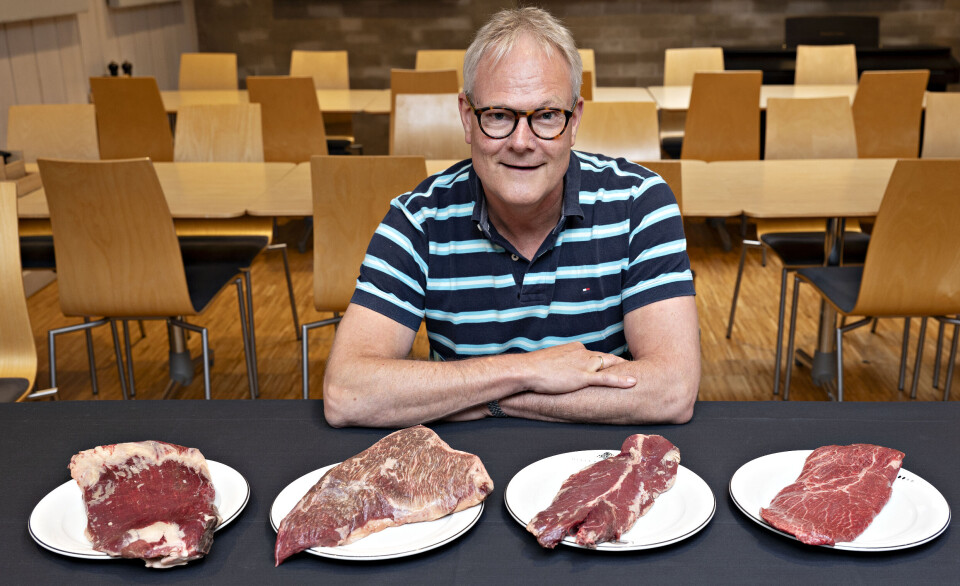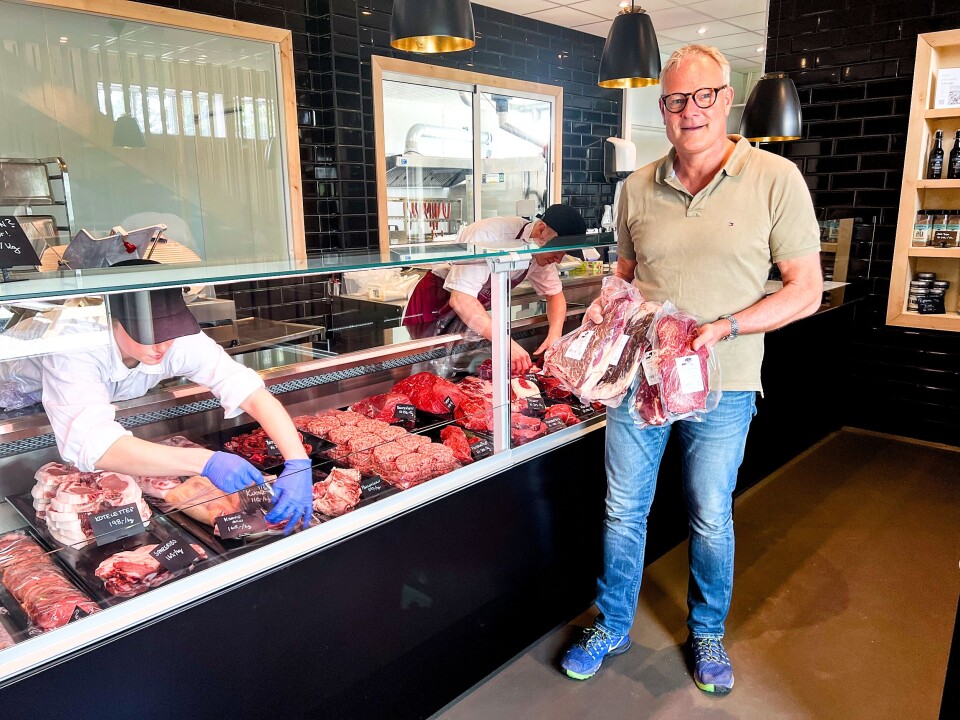
Meat expert's top 5 barbecue tips
Are you getting tired of barbecued sausages, marinated pork chops, and bland steak? Don’t worry. There are more exciting meats to put on the grill.
“Twenty years ago, Norwegian meat counters only offered tenderloin, sirloin, and minced meat. Today, many stores offer a wider variety. Much of it tastes better than traditional steak,” meat expert Rune Rødbotten tells sciencenorway.no.
He encourages all barbecue enthusiasts to think anew, moving away from heavily marinated meat wrapped in plastic.
Very flavourful cuts
Instead, he encourages us to consider other cuts of beef, such as flank steak, hanger steak, flat iron steak, and Denver steak.
Have you ever heard of these?
“These are very flavourful cuts. For a long time, these cuts were simply ground up into minced meat. But now that many people want to eat less processed food, it’s high time more people discover how good these cuts of the animal are,” he says.
Rødbotten, a researcher at the food institute Nofima, adds that they become even better when barbecued.
Not known to the public
The meat cuts we’re talking about are not available in all stores. Several of them haven’t even been given Norwegian names.
“It’s high time the meat industry does something about this,” urges Rødbotten.
The meat expert notes that grocery stores with a broad selection and more butcher shops are selling an increasing amount of these cuts of beef.
“Flat iron and Denver steak come from the front part of the animal, an area often considered to have lower-quality meat. But that’s completely wrong!” he says.
Flat iron is perfect for the grill
“Flat iron steak is a favourite among Americans for barbecuing. It’s as tender as tenderloin and much more flavourful. That's why it's also one of my favourites,” says Rødbotten, who holds a doctorate in meat tenderness.
“Hanger steak is perfect for grilling! This muscle is also known as ‘butcher's steak’,” supposedly because butchers used to keep it for themselves.
The fibres in hanger steak are a bit coarse. Therefore, it’s wise to cut it into thin slices across the grain, the researcher advises.
But be sure to let the meat rest for at least ten minutes after taking it off the barbecue before slicing it.
More people want flank steak
Flank steak is another great cut of beef, according to Rødbotten.
“This is a flat muscle located on the outside of the animal's belly. It should be cooked at high heat, making it excellent for grilling,” he says.
Rødbotten says that like hanger steak, flank steak should be cooked to a higher internal temperature than tenderloin. 65 degrees ensurees good tenderness.
“More people who previously only ate steak are now beginning to discover this cut. But you can still get it for around 18 to 28 USD per kilo in Norway, which is cheaper than steak,” he says.

A versatile cut of meat with many names
“Then there’s tri-tip, also known as Newport steak or triangle steak. It’s a fine cut situated at the junction between the thigh and the belly. It has a slightly coarser texture, so you need to grill it properly. The reward is very flavourful meat,” the researcher says.
Rune Rødbotten believes that the meat industry and some Norwegian grocery chains are finally starting to recognise that this is meat many people might want to buy.
If they only know about it – and that it’s available for purchase.
Ask a local butcher or look for these cuts at stores with a good selection, the researcher urges.
Have you heard of tenderloin chain?
The chain is also a tender and flavourful cut, thanks to its fine marbling.
Season with care
Rødbotten has another tip for those preparing beef or lamb:
“Don’t over-season the meat! The cuts I’ve mentioned have a lot of natural flavour when taken from animals with enough fat.”
“Salt and pepper are fine. Often, that’s enough seasoning. If you pile on chili or something else, you might as well be eating chicken instead,” he says.
For the record, Rodbøtten adds that he has nothing against spices. They are excellent on chicken and pork. But for beef and lamb cuts with a lot of natural flavour, you should be more careful with seasoning.
Slow cooking is gaining popularity
The researcher has noticed that slow cooking meat has become more popular.
“Culotte is a cut from the upper part of the thigh. It’s not used much in Norway yet, but it’s very suitable for slow cooking over several hours. The lower the temperature you cook at, the better the meat becomes. Try cooking at 120 to 150 degrees for a long time,” he says.
More Norwegians are becoming familiar with the Latin American barbecue favourite picanha. This is the same cut as culotte.
Rune Rødbotten suggests slow cooking is a typical Saturday or Sunday project. You need to start well in advance before the meal is to be served.
Use the gas grill
“Also, note that the gas grill is fantastic for slow cooking, using indirect heat,” he says.
Set the grill to a low temperature and let the meat cook slowly to develop a rich barbecue aroma. You can also add wood chips to the grill if you want even more flavour, the researcher advises.
“I can promise you some completely new taste experiences!” he says.
———
Translated by Alette Bjordal Gjellesvik
Read the Norwegian version of this article on forskning.no






































